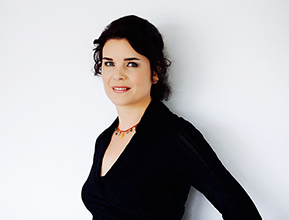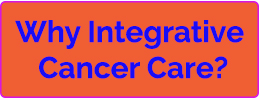“We are not upset by what happens to us, but the view we take on them.”
-O. Carl Simonton, MD, a radiation oncologist, international leader, and pioneer in mind-body treatment of cancer
Creating Healt hier Beliefs contains some of the work and teachings of O. Carl Simonton, MD. This section explores how to create healthier beliefs when dealing with cancer. Dr. Simonton’s mind-body strategies support health and healing in an integrative cancer care model. Know these are only some forms of support to improve the belief system
hier Beliefs contains some of the work and teachings of O. Carl Simonton, MD. This section explores how to create healthier beliefs when dealing with cancer. Dr. Simonton’s mind-body strategies support health and healing in an integrative cancer care model. Know these are only some forms of support to improve the belief system
What is a belief?
A belief is a habitual state of mind in which some construct of ideas and perceptions is placed in some person or thing.
Your beliefs define your thoughts and feelings through your ego.
How important are people’s beliefs?
Hippocrates, the ancient founder of medicine, referred to the brain’s ability to choose its perspective—healthy or unhealthy—as the greatest human power. Whether or not the brain has all of these mighty powers, the brain possesses a high level of influence on the human experience.
What are foundational beliefs?
Our foundational beliefs profoundly influence all aspects of our lives.
Foundational beliefs are about the nature of ourselves, our universe, and our relationship to ourselves in our universe. That includes the meaning of life, illness, health, death, and purpose.
How are beliefs formed?
Beliefs are formed through the ego and thoughts people create about their life experiences and the world around them. Each individual’s beliefs are also personal and cultural, among other factors.
- Beliefs are personal based on life experiences, family and friends, education, personal inclinations that may or may not be related to an identifiable source, and other dynamics.
- Beliefs are culturally based on where people have lived and any other cultures they have strongly been exposed to.
Regardless of the events or circumstances, the human brain can choose its own beliefs.
What is the impact of a person’s beliefs?
Beliefs define how people think and then feel. Beliefs create our interpretations.
Beliefs form mental scripts that are always running on the subconscious level.
Beliefs can either be healthy or unhealthy.
Healthy beliefs support health and vitality.
“When the crucial beliefs that have created the blockage in a healthy, forward flow to life are discovered and dislodged, the full energy of life can flow smoothly once again. And with that flow can come the vital force that will restore the body’s natural defenses to normal potency.”
-O. Carl Simonton, MD, Getting Well Again
Strength and vitality are supported and partially sustained from the mental and emotional competency to develop stability and profound peace of mind that is not shaken by the events of life.
What are some examples of how beliefs impact people?
The mind often develops scripts about situations, people, places, and everything else. A basic example is what people believe and perceive regarding the weather. For a person that does not like rain, after several weeks of it, they might come to expect rain daily. Their negative reaction also illustrates a judgment of bad versus good compared to a neutral reaction for what is.
Another example relates to how people interpret unexpected events. That is inevitably influenced by what people believe about themselves and the world. One person might dwell on what they characterize as a misfortune, while another may see challenges as opportunities. Self-awareness helps people to deconstruct their life experiences to track reactions and identify the content of their emotions, feelings, thoughts, and beliefs. Stages of the Cancer Journey provides insights into some of these dynamics through the cancer experience.
Beliefs define each person’s perceived strengths and weaknesses. Your beliefs about what you can and cannot do define what you think and feel. These mental constructs are fundamental to explore when you are dealing with cancer. Write down your strengths and weaknesses. Ask yourself the source, which is an important question. Are you defining your strengths and weaknesses, or is how you think and feel about yourself defined by another person or specific life experiences? You have the power to choose what you believe you can and cannot do through your cancer journey.
What is the relationship between beliefs and words?
Each person has beliefs about words. People have positive and negative connotations associated with words layered in many thoughts and feelings. Pick any word. If you cannot think of a word at this moment, some suggestions are hope, sadness, cure, health, healing, death, God, family, friends, and community. Start with only one word to focus on your beliefs for that word alone. What are your thoughts and feelings around that word? Where do your thoughts and feelings for that word come from? Do you like how you relate to the word? If not, what would you prefer to think and feel related to the word?
Another exercise is to explore how you think and feel about the word cancer. Consider doing an activity where you write the word cancer in the middle of a blank sheet of paper and then add any language that you associate with cancer. What are your thoughts and feelings around cancer? Where do your thoughts and feelings for the word cancer come from? Do you like how you relate to the word cancer? If not, what would you prefer to think and feel related to cancer? Along with cancer, consider exploring your thoughts and feelings related to the words healing and curing for more information about yourself and perhaps how you are approaching your challenge.
Remember that beliefs are defined in many ways. If you do not like how you think or feel about a word, you can change your belief around it. A next step toward creating healthier beliefs involves writing affirmations for a new belief and reading them daily.
How do I distinguish between healthy and unhealthy beliefs?
It is crucial to identify if your thoughts/beliefs and the resulting feelings are healthy or unhealthy. To determine this, you will need to honestly answer the following 5 questions developed by Maxie C. Maultsby, MD.
1. Are your thoughts/beliefs based on fact?
2. Do your thoughts/beliefs help to protect your life and your health?
3. Do your thoughts/beliefs help you reach your short and long-term goals?
4. Do your thoughts/beliefs help you avoid your most undesirable conflicts?
5. Do your thoughts/beliefs make you feel the way you want to feel?
If you answered “no” to any three of these questions, your beliefs/thoughts are considered unhealthy and need to be changed.
How do people cultivate healthy beliefs?
Cultivating the belief that you are unhealthy comes from nature, according to Dr. Simonton. Here are only some further ways to incorporate healthy belief systems for optimal wellness.
How do you move most effectively to your nature?
- Focus on activities of joy and deep fulfillment
- Conscious breathing
- Move the mind into a non-judgmental way of thinking
- Move through movement practices
- Increase your energy
How do you increase your energy?
- Focus on activities of joy and deep fulfillment
- Use the imagination—with imagery a powerful system to transform thinking
- Imagine the disease process as curable
- Imagine the treatment is helpful
- Imagine the body as capable of healing itself
- Embrace any perceived suffering as a teacher
- Perceive the suffering as a life-enhancing tool
- Ask what the illness is trying to teach you
- Recognize any messages as desirable and compassionate
What is the difference between healthy and unhealthy beliefs, and positive or negative beliefs?
This process is referred to as healthy thinking and not positive thinking.
The most significant difference has to do with the factual aspects of the belief.
Unhealthy—I will be dead within two years regardless.
Positive—I will be alive and healthy two years from now.
Healthy—I can be alive two years from now, and what I do makes a big difference.
Positive thinking is healthier than negative, unhealthy thinking. However, positive thinking does not necessarily align itself with the facts of nature or real life. The goal is to be in harmony with nature, and therefore the beliefs must be factual.
What are some central tenants from the Simonton Cancer Center?
- Our emotions significantly influence our health and recovery (which certainly includes cancer).
- Our beliefs and attitudes influence our emotions, thereby influencing our health.
- We can significantly influence our beliefs, attitudes, and emotions, which can influence our health.
- Ways of influencing our beliefs, attitudes, and emotions can be readily taught and learned using a variety of accessible existing methods.
- Our emotions are a strong driving force in our immune system and other healing systems within our bodies.
What are some of the healthier core beliefs according to the Simonton Cancer Center?
- Nature of humans is that we are good by nature.
- Nature of the universe is that the higher power knows us, cares for us, and loves us.
- Life is a loving teacher and we are here to learn who we are.
- Illness and pain are negative feedback that brings us back to our nature.
- Health, happiness, joy, and love are positive feedback that we are moving in the direction of who we are, including our purpose.
- Death is the end of this existence just as birth is the beginning. Some believe that our essence continues after death and that continuation is desirable.
- Purpose is our own unique and individual unfolding that is built into each of us. We are guided into our unfolding by desire, passion, joy, love, happiness, and fulfillment.
What are some other articles relating to Creating Healthier Beliefs?
You can learn a lot more about aspects of your beliefs with connections between thoughts and feelings in some of our articles. Support yourself with this information and applications to improve your mind-body connection.
Posttraumatic Stress Disorder (PTSD) and Posttraumatic Growth
For More Information
- Simonton Cancer Center
- Getting Well Again by O. Carl Simonton, MD





